| |  | 2024 Legislative Agenda Results Summary The 2024 legislative session saw a return to the State House’s pace and politics of the pre-pandemic era, with budget pressures and competing House-Senate positions dictating many outcomes. The results for the state’s early childhood community were mixed. While two issues on the Alliance’s 2024 Legislative Agenda had solid success, several had only partial victories and others had disappointing results. A number of issues did make important progress in developing their organizational strength, setting them up for more success in the future. Without question, issues of pressing concern to Vermont’s young children and their families – housing, economic security, high quality education, health care, etc. – continue to be prominent in policy discussions in the State House. Looking ahead, Alliance members will be hard at work over the summer and fall building support for ongoing campaigns, tracking implementation of programs that have passed, and preparing a full slate of issues for advocacy in ’25. For more information on any of these issues, get in touch with the lead organizations listed below or with Matt Levin, Alliance Executive Director, at matt@vecaa.org. | | | | 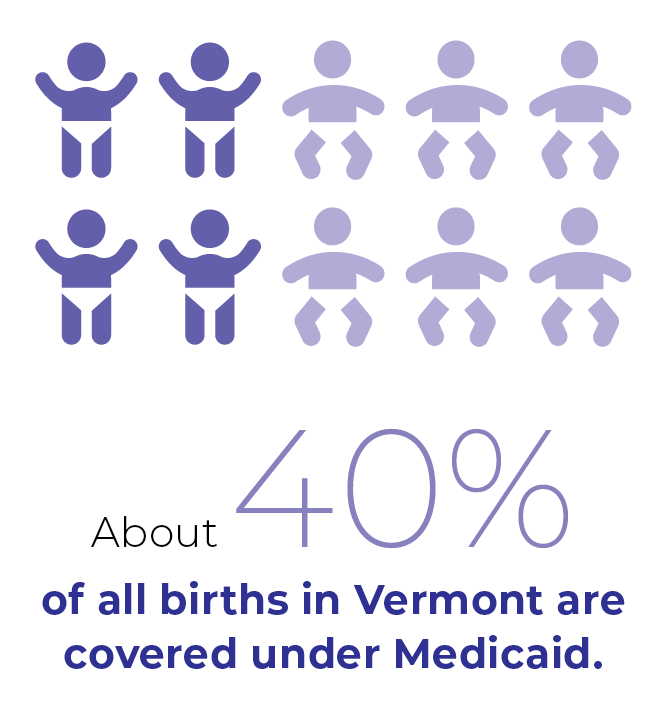 | ACCESS TO DOULA COVERAGE: Medicaid Coverage for Community Doula Care: S. 109 (Act 97) Result: Bill Passage Pre-session goal: Policy changes that will enable Vermont families covered by Medicaid to access the support of a Community Doula. With strong support from both the Senate Health and Welfare and the House Health Care Committees, the Legislature passed S. 109, a bill that initiates the steps necessary to bring doula care for childbirth into the state’s Medicaid system. The Governor signed the bill, now known as Act 97, into law in early May. The bill requires the state’s Office of Professional Regulation to work in consultation with stakeholders to determine the appropriate form of regulation for doulas, and the Department of Vermont Health Access to develop a Medicaid reimbursement plan. Both of these processes should be completed by the end of this year. With these administrative steps underway, Medicaid coverage of doula services could potentially begin as soon as July 2025. LEAD ORGANIZATION: Vermont Doula Access Coalition | | | | 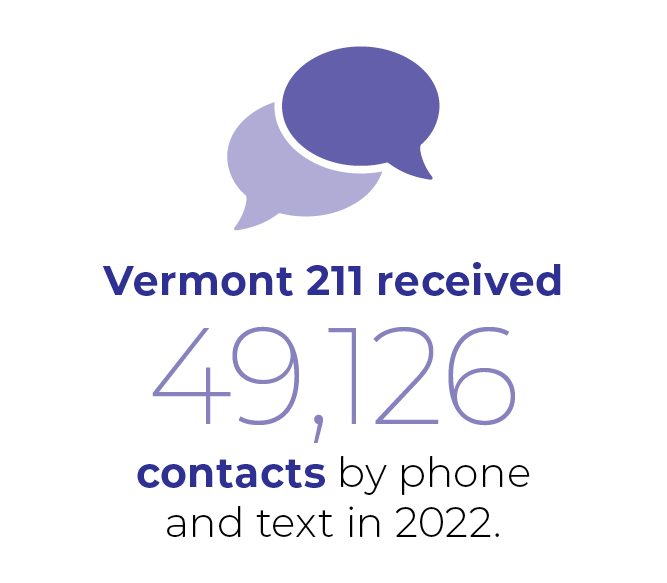 | | Results: Base and one-time funding secured for full 24/7 operations in FY25 Pre-session goal: Secure base funding in FY25 for Vermont 211 that allows for full-time service, maintenance of information databases, and capacity to assist the state and municipalities in times of disaster and emergencies. The Governor’s Recommended FY25 Budget included $1.3 million in base funding for Vermont 211 operations. This funding level would support the current level of service and stabilize operations by providing base funding, as opposed to FY24 funding that relies in part on one-time funds. However, that level of funding would not provide for overnight coverage. The House Human Services Committee advocated to increase the Governor’s proposal by $332,000 to allow for a return to the 24-hour/7-day service level that had been provided until July 2023. The full House supported that recommendation. However, the Senate Appropriations Committee reduced the additional funding by about $150,000, and so the Senate’s budget provided only enough funding for full coverage five days a week. In final budget negotiations, the House strongly supported funding 24/7 service, and as a result this was included in the final FY25 Budget passed by the Legislature. The increased funding means that on July 1 of this year Vermont 211 will be able to return to full time, 24/7 service, providing support at all hours for families in need. LEAD ORGANIZATION: Vermont Early Childhood Advocacy Alliance | | | | 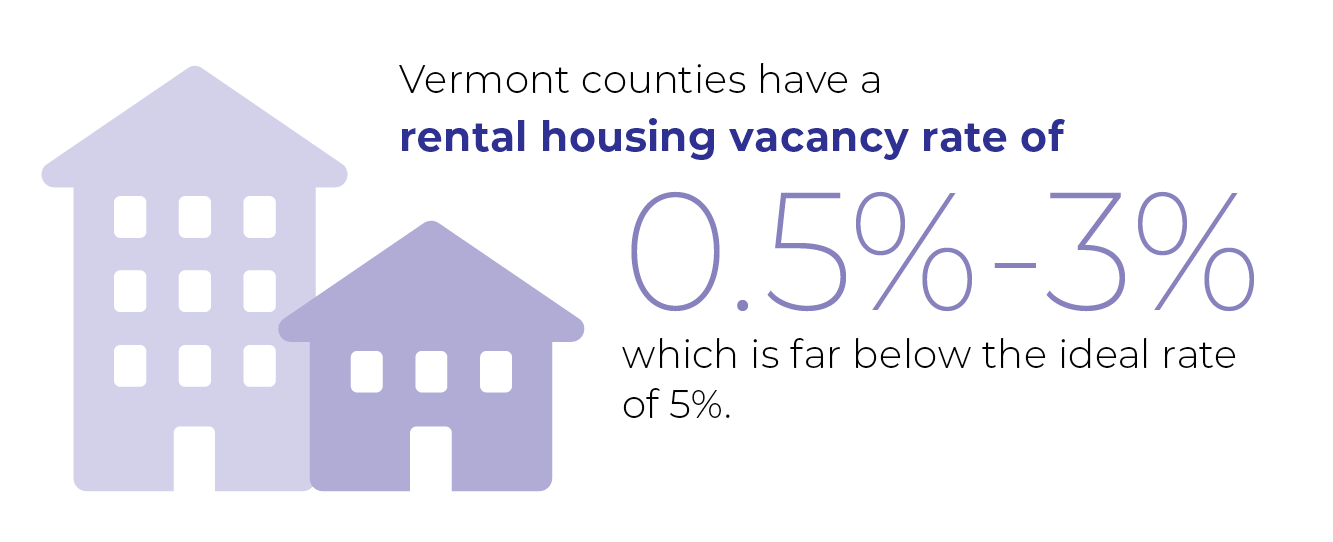 | HOUSING & HOMELESSNESS: Increase Access to Safe, Stable, and Affordable Housing for all Children: FY25 Budget, H. 827, H. 879, H. 687 Results: Emergency Housing reduced, minimal investments in Affordable Housing Pre-session goals: - Make $160 million in housing capital available for affordable housing and shelter development and preservation
- Provide full statutory funding of the Vermont Housing and Conservation Board through the Property Transfer Tax
- Re-envision the state-run emergency housing system
- Ensure adequate funding for General Assistance emergency housing and households remaining after the end of the Hotel/Motel program (the June Cohort) while any programmatic changes are implemented
- Adequately fund the state programs that provide support and services for households in temporary and permanent housing, with particular attention to housing stability and retention services designed to increase sustainability and prevent homelessness for Vermont families.
NOTE – this version provides a compressed summary of the results of the session. For a more detailed accounting, please see the expanded version of this document on the Alliance website. Emergency Housing The Governor’s Recommended FY25 Budget proposed very large cuts to the General Assistance (GA) Emergency Housing Program that would return GA to its limited, pre-pandemic scope. The House FY25 Budget rejected this framing, and proposed funding to allow the GA program to serve more of those in need. The House also passed H.879, which for the first time created an emergency housing program in statute. The program would have begun in FY26, with an Advisory Committee and Task Force set up to help further develop the details of the new program. The Senate did not support most of the steps outlined in H. 879. While they favored a more expansive GA program than the Governor, they proposed a smaller program than the one supported by the House. After extensive discussions between the Administration, the House, and the Senate, the final FY25 Budget includes $44 million to fund GA ($7.5m in base, $16.5m in one-time, and $20m in contingency funds which will be available if future tax revenues come in as predicted), with a Task Force to develop recommendations for creating a state emergency housing program in future years. The agreement provides households with vulnerable members unlimited access to shelter in hotels/motels from December 1 to March 31 and limited access at other times. Households that do not meet eligibility criteria do not have access to emergency shelter in hotels and motels. To address this, the Budget includes an additional $10 million in contingency funds to develop emergency shelter capacity. This emergency housing plan is better than the initial one outlined in the Governor’s proposal, thanks to considerable work from the Legislature, especially the House. However, it will still leave many vulnerable and non-vulnerable Vermonters without shelter during significant portions of the year. Additional Affordable Housing Investments The Governor’s Recommended FY25 Budget included full statutory funding of $24.6 million for the Vermont Housing and Conservation Board (VHCB). Both the House and the Senate supported this part of the Governor’s proposed budget. Unfortunately, it did not include significant additional funding to maintain the substantial, sustained investments necessary to address the affordable housing and homelessness crisis in Vermont. The House developed comprehensive housing legislation, H.829, that included a 10-year housing plan. Funding for the needed investments would come from an increase in Property Transfer taxes and a new personal income tax bracket for very high-income Vermonters. The Senate was not in agreement with the House funding proposal, either in scope or funding methodology. As Senate leadership felt the best way to support creating new housing was through regulatory reform rather than additional investment, H. 829 was not taken up by the Senate. After much negotiation between various House and Senate committees, a compromise was struck that will generate $15.6 million in FY25 through an increase in the Property Transfer tax to support a number of housing generation and homelessness prevention programs. The FY25 Budget also includes $25.8 million through an existing grant program for community programs to provide a variety of supports to households experiencing homelessness, and $7 million in funding for several new community-run shelters scheduled to open later this year. Additional funding for housing initiatives in FY25 may be realized if surplus funds are available. This funding includes $30 million for affordable housing and shelter capacity, $25 million for middle-income homeownership, and $10 million for other programs. LEAD ORGANIZATION: Housing & Homelessness Alliance of Vermont | | | | 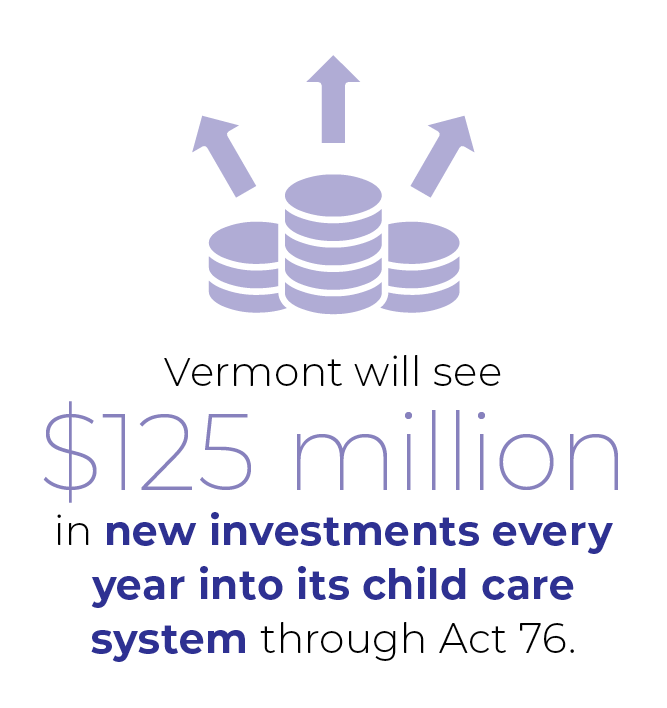 | EARLY CHILDHOOD EDUCATION: Act 76 Implementation: Deliver on the Promise: FY25 Budget Results: Act 76 fully funded and strengthened Pre-session goals: monitor implementation of Act 76 with the goal of making it work for all Vermont families, and to ensure that funding gets into the hands of those who need it most – child care programs and early childhood educators, families and kids This was a historic legislative biennium for progress on child care, with the passage of Act 76 in 2023. This year the Legislature strengthened and fully funded Act 76. While the Governor initially proposed reducing base funding for the Child Care Financial Assistance Program (CCFAP), the Legislature took a different approach and strengthened the law by amending the language in statute to ensure that any child who qualifies for child care tuition assistance from the state will receive financial assistance. The state’s early childhood education system is already seeing very promising early results as Act 76 rolls out. Thanks to increases in CCFAP reimbursement rates, child care programs are stabilizing or expanding and many programs are increasing compensation for early childhood educators. At the same time, families are also receiving significant support. In April, Act 76 expanded income eligibility for CCFAP and adjusted financial assistance levels, helping more Vermont families pay for child care. A second, even bigger expansion is coming in October. By the end of 2024, over 7,000 additional Vermont children and their families may be eligible for tuition assistance. LEAD ORGANIZATIONS: Let’s Grow Kids (LGK) and Vermont Association for the Education of Young Children (VTAEYC) | | | | 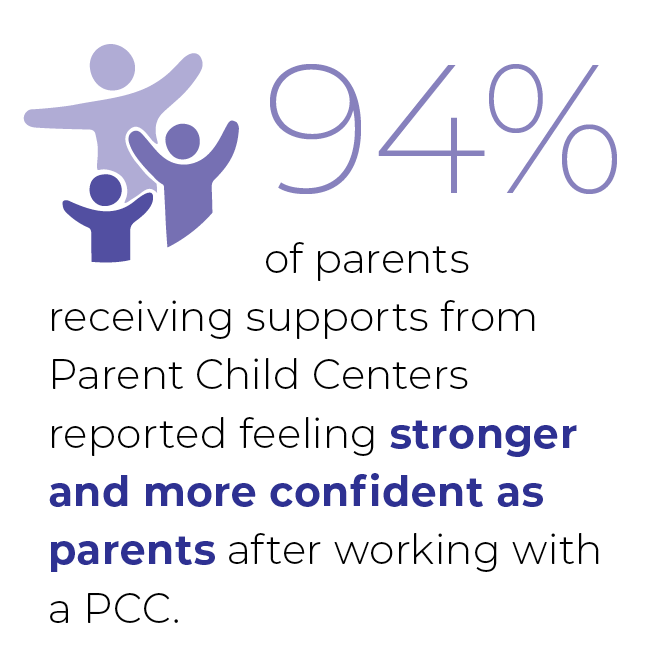 | PARENT CHILD CENTER NETWORK INTEGRATED GRANT: Fully Fund Parent Child Centers: FY25 Budget Results: Modest funding increase Pre-session goal: Secure a base funding increase of $721,945 for the Integrated Grant to cover increased administrative and personnel costs, move closer to providing the actual cost of providing services, and avoid service reductions. The Parent Child Center (PCC) Network continues to focus on increasing the base funding for the PCC Integrated Grant, which is the funding source for their partnership with the state. Their advocacy goal for FY25 was to increase Integrated Grant funding to address administrative needs, as the PCCN continues to formalize their structures in conjunction with statutory changes made last year. PCCs have also seen significant increases in health insurance costs for their staff. While the Governor’s budget and the House budget did not include any increase, the Senate chose to provide a modest increase in base funding for the Network of $204,750, as part of a larger effort to provide a 3% funding increase to community service agencies. The Legislature’s final FY25 Budget included the Senate proposal. LEAD ORGANIZATION: Vermont Parent Child Center Network | | | | 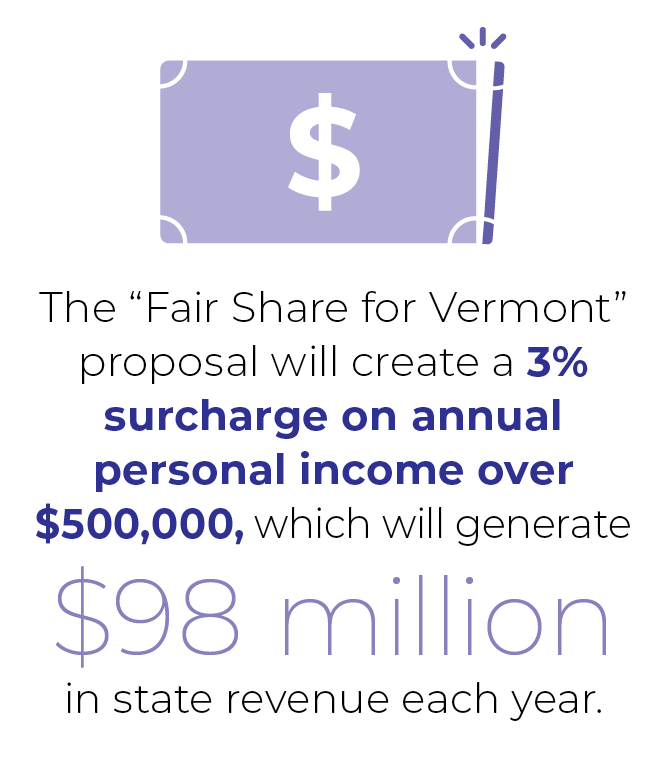 | FAIR SHARE FOR VERMONT: Build a Vermont that Works for Everyone: H. 827, H. 828, H. 829, H. 546 Results: House passage of Bracket Change, Wealth Tax Study Pre-session goals: Passage of the “Fair Share for Vermont” Proposal, which would increase the tax rate for Vermont taxpayers earning more than $500,000. In April the House passed H.829, a bill supporting the creation of affordable housing. To raise the required revenue, the bill included a new income tax bracket for marginal income over $500,000. The bracket would have impacted the top 1.1% of Vermont taxpayers and raised over $74 million annually. As the Senate did not take up the bill, the proposal was not passed this year. However, advocates will look to build on the support of the House in the next biennium. A proposal to tax growth in assets for taxpayers with over $10 million of net worth was included in H. 827, which was introduced in January. The House Ways and Means Committee later proposed to create a study committee on the wealth tax policy, and included language to that effect in H. 546, the miscellaneous tax bill, when it passed the House. Unfortunately, the study language was removed by the Senate and not included in the final version of the bill. In the coming months, Fund Vermont’s Future will be working with legislators and leading experts on wealth tax policy to continue studying the issue. FVF recognizes and appreciates the House’s leadership on fair taxation. LEAD ORGANIZATION: Fund Vermont’s Future Campaign | | | | 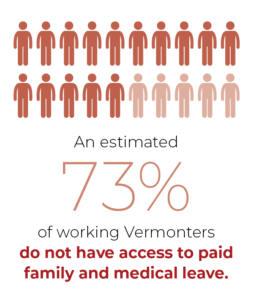 | PAID FAMILY & MEDICAL LEAVE: Improving the Health and Well-Being of Vermont Families: H. 66 Results: No Senate consideration of House bill Pre-session goal: Passage of the strong paid medical and family leave program Vermonters need. The Vermont Paid Leave Coalition continued advocacy for the strong paid medical and family leave program Vermonters need, and urged the Senate to take up H. 66, the comprehensive Paid Leave bill that passed with strong support last year in the House. Unfortunately, the Senate chose not to give the bill a full hearing during the session. The Coalition will continue to build support for the leave proposal in anticipation of action on the proposal next year. LEAD ORGANIZATION: Vermont Paid Leave Coalition | | | | 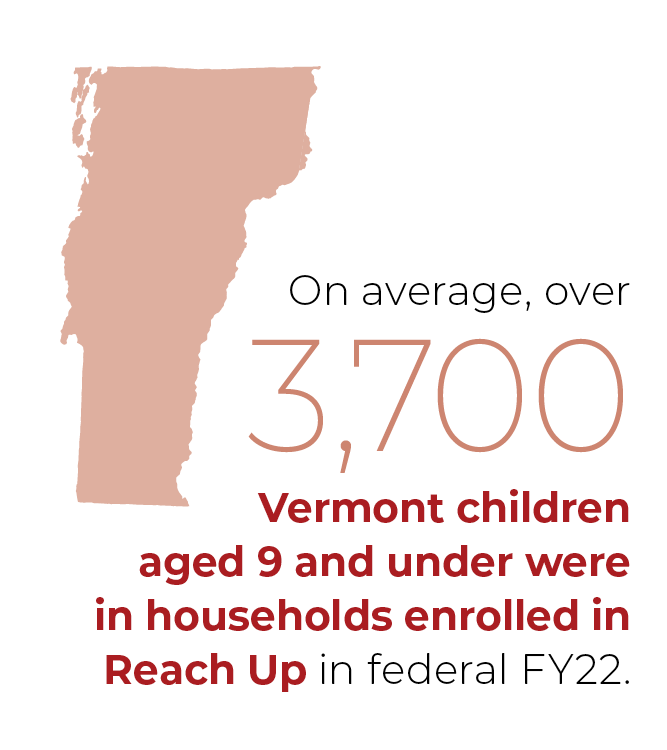 | REACH UP: Ending Child Poverty is Within Our Reach: FY25 Budget Results: No additional funding, minor language change Pre-session goals: 1) Elimination of the “ratable reduction” that reduces the Reach Up benefit by about 50%; 2) Use of current cost of living to create a grant that is adequate; and 3) Prioritization of permanently affordable housing. H. 94, passed last year, required the Administration to produce a report with an actionable plan to eliminate the ratable reduction in five years. The report was submitted in March. Unfortunately, neither the Governor nor the Legislature proposed any increases or improvements to the Reach Up benefit in the FY25 Budget. The House Human Services Committee did recommend steps be taken to reduce the ratable reduction following the outlines of H. 94, but this proposal did not have sufficient support to make it into the House budget proposal. Language was added to the Legislature’s FY25 Budget requiring that the annual report from the Administration on the cost of providing full Reach Up benefits prior to the “ratable reduction” must use the current fiscal year’s basic needs calculation, rather than an outdated one. This change will ensure that the benefit shortfall and full funding needs will be more accurately reported in future years. LEAD ORGANIZATION: Voices for Vermont’s Children for the Vermont Reach Up Coalition | | | | 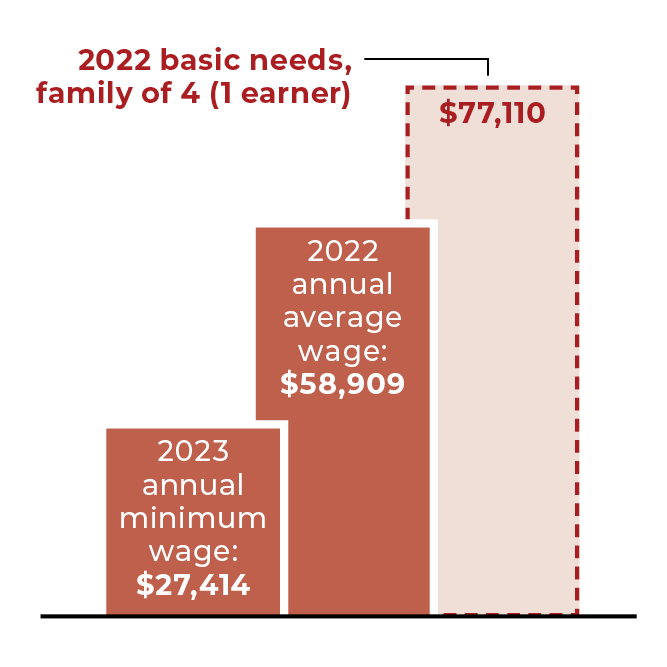 | STATE TAX CREDITS: Expand Vermont Tax Credits to Help Vermonters Meet Their Basic Needs: H. 701 Results: No action Pre-session goals: Expand the Vermont EITC from matching 38% of the federal EITC to 55%, and to expand access to the Vermont EITC and CTC for families with low incomes. Early in this year’s session, the House Ways and Means Committee received a preliminary introduction to H. 701, which would increase Vermont’s Earned Income Tax Credit (EITC) and make other changes to the tax code that would assist tax filers with low incomes. The Committee also took background testimony on the EITC and the Child Tax Credit (CTC). Unfortunately, no additional action was taken on the bill. Advocates continue to seek opportunities to increase outreach to ensure that every eligible Vermonter receives the credits. LEAD ORGANIZATION: Public Assets Institute | | | | 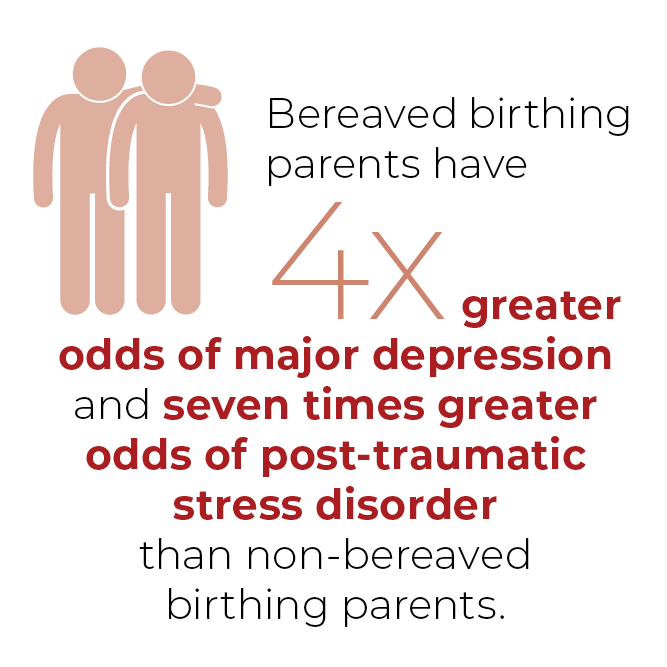 | PERINATAL LOSS: Funding to Strengthen Peer Support for Pregnancy & Infant Loss: FY25 State Budget Result: Funding not secured Pre-session goal: Secure $87,500 in state funding for Empty Arms Vermont to strengthen their peer support programs and develop a long-term plan for sustainable funding. Despite strong support from both the House Human Services and Senate Health and Welfare Committees and a very active advocacy effort, the FY25 Budget did not include one-time funding to support the development of Empty Arms Vermont, an organization that provides peer support to families around the state that have suffered a loss during the perinatal period. Advocacy continues by both Empty Arms and legislators seeking state funding for the program through other sources. LEAD ORGANIZATION: Empty Arms Vermont | | | | | | | | | | The Vermont Early Childhood Advocacy Alliance is a statewide coalition formed in 2000 of early childhood professionals, parents, organizations, businesses, and strategic partners committed to improving public policies that impact young children between birth and age eight in the areas of health, safety, food security, economic security, and early care and education. The Alliance crafts an annual Legislative Agenda in partnership with early childhood organizations, provides year-round advocacy support, and facilitates meaningful interactions with policymakers at key times during the decision making process. | | | | 7 School Street | Montpelier , Vermont 05602 vecaa.org The Vermont Early Childhood Advocacy Alliance is a program of the Vermont Community Loan Fund. | | | | | | | | | |